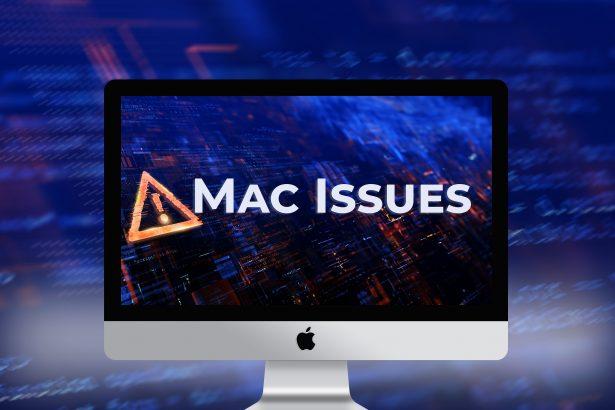In the realm of online security threats, the MacOS Security Center Scam stands out for its deceptive tactics aimed at misleading and alarming users. This scam hinges on the manipulation of user trust and fear, with the ultimate goal of convincing them to purchase specific antivirus software. In this article, we’ll delve into the deceptive strategies employed by this scam, shed light on its intricacies, and offer insights into safeguarding against such misleading ploys.
Unveiling the Tactics of the MacOS Security Center Scam
The MacOS Security Center Scam is orchestrated through a fraudulent website that employs a deceptive approach to mislead users. Upon visiting this website, users are exposed to a sequence of actions. It begins with a simulated system scan, followed by the presentation of a deceptive pop-up message. This message is meticulously crafted to mimic a genuine security alert associated with the ‘MacOS Security Center,’ falsely claiming that the user’s Mac is in imminent danger.
The urgency of the message cannot be overstated; it presses users to take immediate action. It strongly suggests that any delay in following the provided instructions could lead to further harm to the user’s system. In fact, the message advises users not to leave the page until they have executed the recommended steps, creating a sense of urgency and fear.
What makes this scam particularly disconcerting is that it is perpetrated by affiliates promoting a legitimate anti-malware product through manipulative and deceptive means. These affiliates employ scare tactics, as evident from the fraudulent pop-up message, which invents a system threat and insists on immediate action.
The primary objective of this scheme is to convince users to follow the suggested steps, which include downloading and purchasing the promoted application. Notably, affiliates typically earn a commission for each user they successfully lead to make a purchase, which serves as a strong financial incentive for these deceptive practices.
While the promoted product and its developer may have a reputable standing within the industry, it’s unusual for trustworthy companies to resort to such deceptive tactics to market their products. Consequently, users are advised to exercise caution when encountering such tactics, as they undermine trust and transparency in the cybersecurity landscape.
The Inadequacy of Websites for Conducting Malware Scans
It’s important to recognize that websites fundamentally lack the capability to perform malware scans on users’ devices for several compelling reasons:
Browser Limitations
Web browsers, the gateway through which users access websites, are intentionally designed with limited access to a user’s device for security purposes. This design isolates websites from the underlying operating system and hardware to prevent unauthorized access. As a result, a website cannot directly scan a user’s device for malware without explicit consent and cooperation from the user.
Security Concerns
Permitting websites to conduct comprehensive device scans would introduce substantial security risks. Malicious websites could exploit this capability to search for vulnerabilities in the user’s system or even install malware. This poses a grave security and privacy threat.
User Privacy
Scanning a user’s device for malware without their clear and voluntary consent would represent a significant breach of privacy. Users have the right to control what software can access and scan their devices, and any unauthorized scanning would violate this fundamental right.
Technical Limitations
Effectively conducting a thorough malware scan demands specialized software and access to the underlying file system and processes on the device. These requirements typically surpass the capabilities of a web application.
Resource Intensiveness
Malware scanning is a resource-intensive task that can consume substantial CPU and memory. Allowing websites to initiate such scans could hamper the performance of a user’s device and potentially disrupt their online experience.
Lack of Standardization
There is no universally accepted method for websites to conduct malware scans of users’ devices. Each operating system and security software may have different requirements and APIs for performing such scans, making it challenging for websites to offer this functionality consistently and user-friendly.
Due to these limitations and security concerns, websites are fundamentally incapable of conducting malware scans on users’ devices. Instead, users are encouraged to rely on reputable and dedicated antivirus or anti-malware software to protect their devices from threats.
Safeguarding Against Deceptive Scams
To protect yourself from deceptive scams like the MacOS Security Center Scam, consider the following steps:
Vigilance and Critical Thinking
- Critical Evaluation: When confronted with alarming messages or warnings, approach them with a critical mindset. Challenge their authenticity before taking any action.
- Staying Informed: Keep yourself informed about common online threats, deceptive tactics, and the latest developments in cybersecurity. Share your knowledge with friends and family to protect them from falling victim to similar scams.
Taking Action
- Isolate Affected Systems: If you’ve engaged with the scam and suspect an infection or unauthorized access, isolate the affected system from your network to prevent the potential spread of malware.
- Data Recovery: If you have backups, use them to restore your system to a clean state. Ensure that your backups are free from malware before restoration.
- Seek Expert Assistance: Dealing with complex malware or potential data breaches may require professional cybersecurity assistance. Consult experts to assess the situation and recommend appropriate actions.
Guarding Against Future Threats
To shield yourself from deceptive scams and
misleading tactics in the future, consider these practical tips:
- Maintain Skepticism: When faced with alarming messages and warnings, exercise caution and take the time to assess their authenticity before taking any action.
- Regular Backups: Maintain up-to-date backups of your important data to minimize the impact of potential data loss caused by malware or cyber threats.
- Reputable Security Software: Utilize reputable antivirus and anti-malware software to add an extra layer of protection against online threats.
- Stay Updated: Keep your operating system and software applications up to date with the latest security patches to address vulnerabilities.
In summary, the MacOS Security Center Scam exemplifies the misuse of user trust and fear for financial gain. Understanding these deceptive tactics, staying informed, and practicing good cybersecurity habits are pivotal in safeguarding your digital environment and protecting yourself from misleading ploys employed by cybercriminals.




